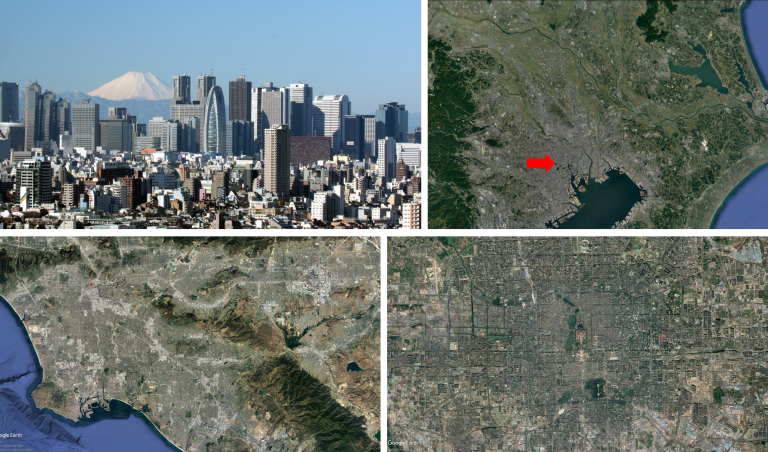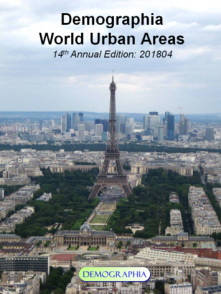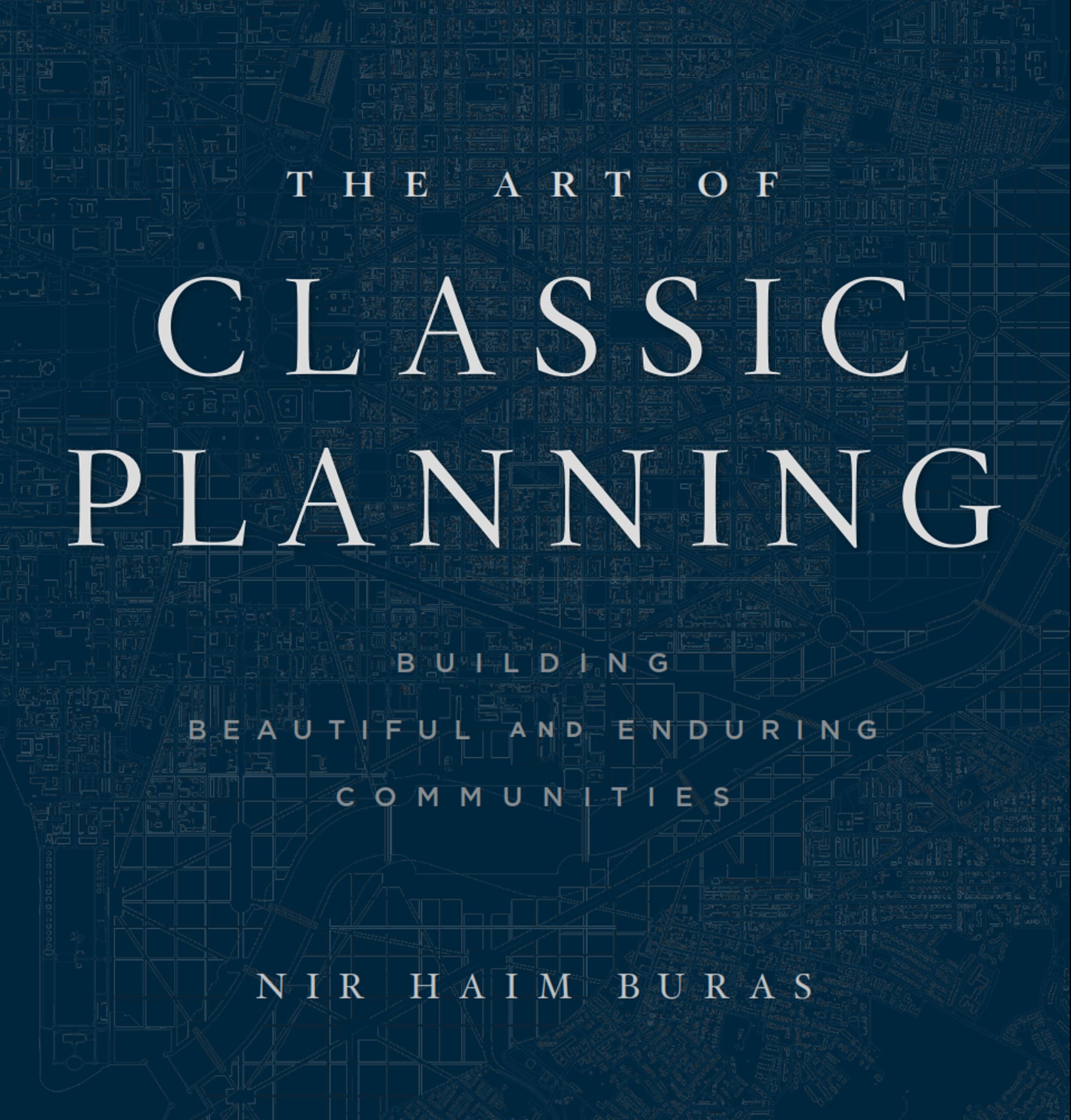
Classic Planning Holism is a Basis for Megacity Strategy
Classic Planning is not only relevant in creating beauty and long-term urban value. Its core principles offer a strategy for a hitherto unapproachable task: military control of a megacity. This blog of mine was published on January 3, 2019 by the Mad Scientist Initiative at the U.S. Army Training and Doctrine Command (TRADOC), a marketplace of ideas in dialogue with academia, industry, and government, focused on the Deep Future, 2035-2050. Its broad spectrum of interests makes the group an exceptional Community of Forecasters, among them those interested in urbanism. This blog was driven by the Pentagon video Megacities: Urban Future, the Emerging Complexity. It is all true and it will scare you. But we make the case for using classical urbanism to strategize how to control a large and complex urban environment — and leave some good behind, not just random destruction.
Image above: Shinjuku, a special ward in Tokyo, is a major commercial and administrative center, housing the northern half of the busiest railway station in the world (Shinjuku Station) and the administration center for the government of Tokyo. Skyscrapers of Shinjuku with Mt Fuji in the background; Aerials of Tokyo, Los Angeles,, and Beijing
[Editor’s Note: Recent operations against the Islamic State of Iraq and the Levant (ISIL) to liberate Mosul illustrate the challenges of warfighting in urban environments. In The Army Vision, GEN Mark A. Milley, Chief of Staff of the Army, and Dr. Mark T. Esper, Secretary of the Army, state that the U.S. Army must “Focus training on high-intensity conflict, with emphasis on operating in dense urban terrain…” Returning Mad Scientist Laboratory guest blogger Dr. Nir Buras leverages his urban planning expertise to propose a classic approach to military operations in Megacities — Enjoy!]

A recent study identified 34 Megacities, defined as having populations of over 10 million inhabitants.[i] The scale, complexity, and dense populations of megacities, their need for security, energy, water conservation, resource distribution, waste management, disaster management, construction, and transportation make them a challenging security environment.[ii]
With urban warfare experience from Stalingrad to Gaza, it is clear that a doctrinal shift must take place.
Urban terrain is the “great equalizer.” It diminishes in megacities the attacker’s advantages in firepower and mobility.”[i] Experiences in Baghdad, Mosul, and Aleppo in Aachen, Seoul, Hue, and Ramadi, shift the perspective from problem solving to critical holistic thinking skills and decision making required in ambiguous environments.[ii]
For an Army, rule number one is to stay out of cities.
If that is not possible, the second rule of warfare, is to manipulate the environment.
The Strategic Studies Group finds that a megacity is the most challenging environment for a land force to operate in.[iii] But currently, the US Army is incapable of operating within the megacity. [iv] The intellectual center of gravity is open to those who choose to seize it, because it does not exist.[v]
Cities are holistic entities, but holism is not brown food and Birkenstocks. This discipline manages whole systems which are more than a sum of their parts. Where problem-solving methodology drags the problem with it to result in negative synergies (new problems), the holistic methodology works from aspiration and results in positive synergies, many unforeseen.
The aspiration for megacity operations is control, not conquest. The cure must not be worse than the disease.
The holistic approach to combat, to fight the urban context, not the enemy, means reconfiguring the environment for operational purposes. Its goal of reforming antagonism to US interests by controlling and reforming the city to become self-ruling and long-term sustainable, would facilitate urban, political, and economical homeostasis in alignment with US interests and bequeath a homeostatic urban balance legacy, “Pax Americana.”[vi] Paradoxically, it may be the most cost-effective approach.
Not having megacities in the first place is not as inevitable as it seems. They are inherently unsustainable and need to be fixed, war or not. Classic planning for megacities would break them down into environmentally controllable chunks of human scaled, walkable areas of 30,000, 120,000, and 500,000 persons by means of swathes of countryside. Large urban parks are small scale versions of full-blown countryside and serve many of its same purposes.
A continuous network of rural, agricultural, and natural areas, it would be at least 1-mile deep, and be the place where transport, major infrastructure, highways, campuses, large scale sports venues, waste dumps, even mines, might be located.
This is naturally ongoing in Detroit, is historically documented to have happened in Rome, and can be witnessed in Angkor Wat. While the greatest beneficiaries of this long term would be the populace, its military benefits are obvious. The Army would simply accelerate the process.
The idea is to radically change the fighting environment while bolstering the population and its institutions to sympathize with U.S. goals. “Divide and conquer” followed by a sustainable legacy. Notably, a megacity requires an understanding of a city’s normal procedures and daily operations beforehand.[vii] The proposed framework for this is the long-term classic planning of cities.
The application of classic planning to megacity operations follows four steps: Disrupt, Control, Stabilize, and Transfer.
DISRUPT
DISRUPT urban fabric with swathes of country at least a mile wide containing a continuous network of rural, agricultural, natural, and water areas at least 1-mile deep, where transport, major infrastructure, highways, campuses, large scale sports venues, etc. are located. In urban fabric, structures would be removed to virgin ground, and agriculture and nature reinstated there. Solutions for the debris will need to be developed, as well as for buried infrastructure. The block layout may remain in whole or part for agricultural and forest access. Soil bacteria may be used to rapidly consume toxic and hazardous materials. This has to be thoroughly planned in advance of a conflict.
CONTAIN
CONTAIN urban fabric to a 1 hour walk edge to edge, 2 hours max, 2-4 miles edge to edge, both in existing fabric and in new settlements for relocated persons.
STABILIZE
STABILIZE neighborhoods, quarters, and city centers hierarchically, and densify them, up to 6-8 floors tall, according to the classic planning model of standard fabric buildings. Buildings taller than 6 or 8 stories may be placed on the periphery, if they are necessary at all. Blocks, streets, plazas, and parks are laid out in appropriate dimensions. Proven, traditional designs are used for buildings at least 85% of the time. To stabilize communities through leadership, mentoring, the establishment of markets, industry, sources of income, and community institutions.
TRANSFER
TRANSFER displaced communities to new urban fabric built on classic planning principles as developed after the Haiti Earthquake; and transfer air rights from land reclaimed for country to urban fabric centers (midrise densification) and peripheries (taller buildings as necessary). Transfer community management back to residents as soon as possible (1 year). Transfer loyalty, build community, develop education, mentoring, and training, and use civilian commercial work according to specifically developed management models for construction, economic, and urban management.[viii]
To adopt a holistic approach to the megacity, the US Army must engage in a comprehensive understanding of the environment prior to the arrival of forces, and plan the shaping of the environment, focusing on its physical attributes for both the benefit of the city, and the Army. It can be expected that the outcomes will be the type of synergies stimulated by the Marshal Plan after World War II. Those who control the peace control the war.
End Notes:
[i] ARCIC, Unified Quest Executive Report 2014 (Fort Eustis, VA: US Army Capabilities Integration Center, 2014), 1. Quoted in Kaune.
[ii] Harris et al., Megacities and the US Army, 22. Louis A. Dimarco, Concrete Hell Urban Warfare from Stalingrad to Iraq (Oxford, UK: Osprey Publishing, 2012) 214-215. Quoted in Kaune.
[iii] Harris et al., Megacities and the US Army, 21.
[iv] Kaune.
[v] David Betz, “Peering into the Past and Future of Urban Warfare in Israel,” War on the Rocks, December 17, 2015, accessed December 17, 2015, http://warontherocks.com/2015/12/peering-into-the-past-and-future-of-urban-warfare-in- israel/. Quoted in Kaune.
[vi] Tom R. Przybelski, “Hybrid War: The Gap in the Range of Military Operations” (Newport, RI: Naval War College, Joint Military Operations Department), iii.
[vii] Kaune.
[viii] Michael Evans, “The Case Against Megacities,” Parameters 45, no. 1, (Spring 2015): 36. Quoted in Kaune.
[i] “Demographia World Urban Areas 11th Annual Edition 2015,” Demographia, 2-20, September 18, 2015, accessed December 16, 2015, http://www.demographia.com/db-worldua.pdf. 67% of large urban areas (500,000 and higher) located in Asia and Africa.
[ii] Jack A. Goldstone, “The New Population Bomb: The Four Megatrends That Will Change the World,” Foreign Affairs, (January/February 2010) 38-39; National Intelligence Council, Global trends 2030 Report: Alternative Worlds (Washington, DC: National Intelligence Council, 2012), 1. Quoted in Kaune.
[i] “Demographia World Urban Areas 11th Annual Edition 2015,” Demographia, 2-20, September
18, 2015, accessed December 16, 2015, http://www.demographia.com/db-worldua.pdf. 67% of large urban areas (500,000 and higher) located in Asia and Africa.
WELCOME!
Get In Touch
Please get in touch with us
to discuss your requirements.
Please get in touch with us
to discuss your requirements.
